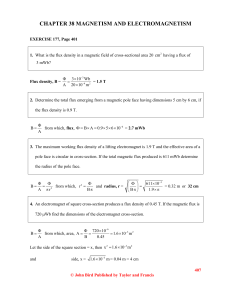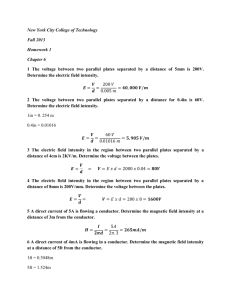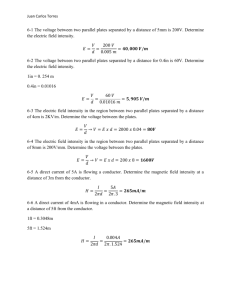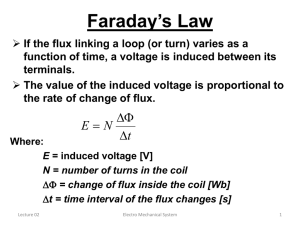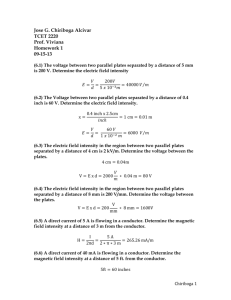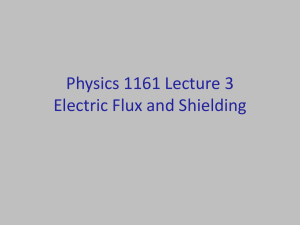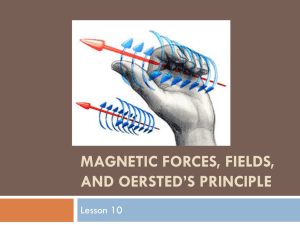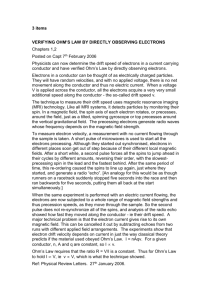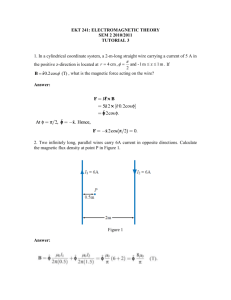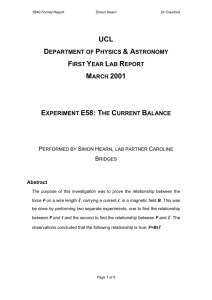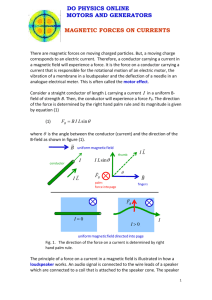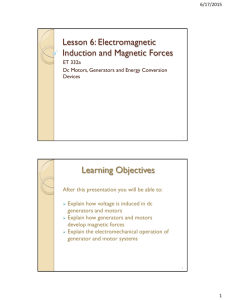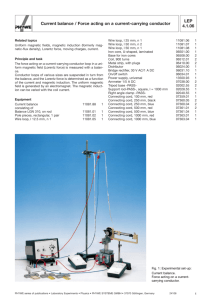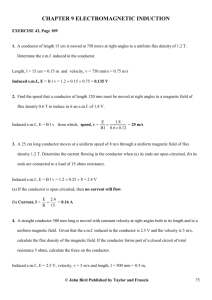Chapter 8
advertisement
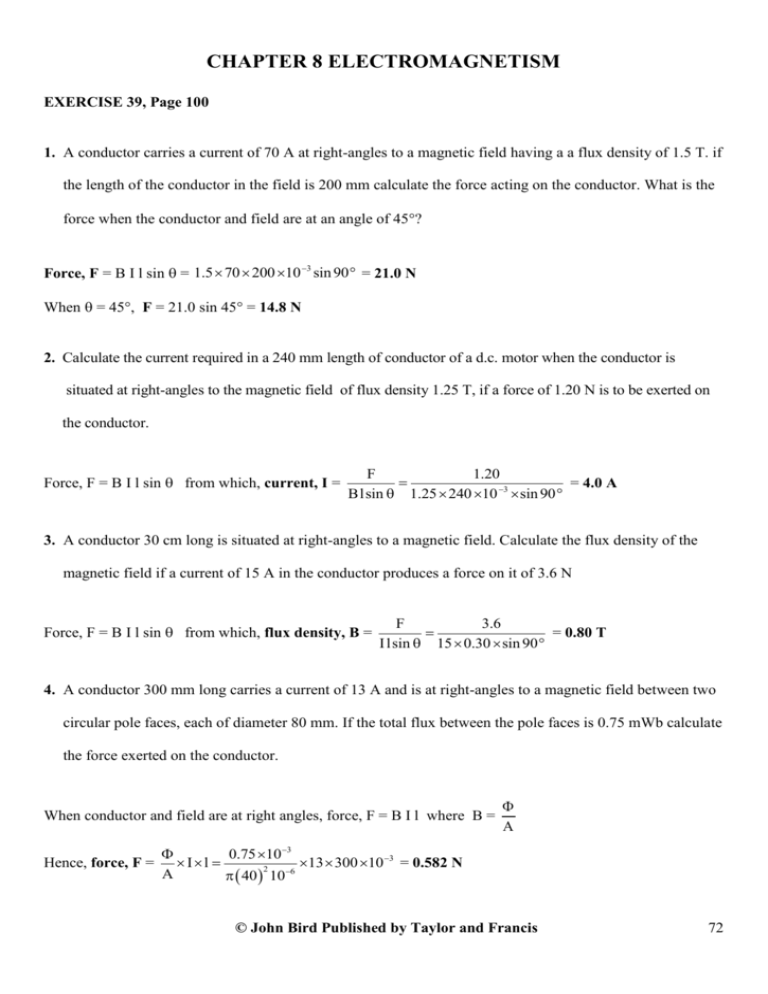
CHAPTER 8 ELECTROMAGNETISM EXERCISE 39, Page 100 1. A conductor carries a current of 70 A at right-angles to a magnetic field having a a flux density of 1.5 T. if the length of the conductor in the field is 200 mm calculate the force acting on the conductor. What is the force when the conductor and field are at an angle of 45? Force, F = B I l sin = 1.5 70 200 10 3 sin 90 = 21.0 N When = 45, F = 21.0 sin 45 = 14.8 N 2. Calculate the current required in a 240 mm length of conductor of a d.c. motor when the conductor is situated at right-angles to the magnetic field of flux density 1.25 T, if a force of 1.20 N is to be exerted on the conductor. Force, F = B I l sin from which, current, I = F 1.20 = 4.0 A Blsin 1.25 240 10 3 sin 90 3. A conductor 30 cm long is situated at right-angles to a magnetic field. Calculate the flux density of the magnetic field if a current of 15 A in the conductor produces a force on it of 3.6 N Force, F = B I l sin from which, flux density, B = F 3.6 = 0.80 T I lsin 15 0.30 sin 90 4. A conductor 300 mm long carries a current of 13 A and is at right-angles to a magnetic field between two circular pole faces, each of diameter 80 mm. If the total flux between the pole faces is 0.75 mWb calculate the force exerted on the conductor. When conductor and field are at right angles, force, F = B I l where B = Hence, force, F = A 0.75 10 3 Il 13 300 10 3 = 0.582 N 2 6 A 40 10 © John Bird Published by Taylor and Francis 72 5. (a) A 400 mm length of conductor carrying a current of 25 A is situated at right-angles to a magnetic field between two poles of an electric motor. The poles have a circular cross-section. If the force exerted on the conductor is 80 N and the total flux between the pole faces is 1.27 mWb, determine the diameter of a pole face. (b) If the conductor in part (a) is vertical, the current flowing downwards and the direction of the magnetic field is from left to right, what is the direction of the 80 N force? (a) Force, F = B I l = I l 2 I l A r from which, radius, r = Hence, I l 1.27 103 25 400 103 7.1103 m = 7.1 mm F 80 diameter = 2 r = 2 7.1 = 14.2 mm (b) By Fleming’s left hand rule, the direction of the force is towards the viewer. 6. A coil is wound uniformly on a former having a width of 18 mm and a length of 25 mm. The former is pivoted about an axis passing through the middle of the two shorter sides and is placed in a uniform magnetic field of flux density 0.75 T, the axis being perpendicular to the field. If the coil carries a current of 120 mA, determine the force exerted on each coil side, (a) for a singleturn coil, (b) for a coil wound with 400 turns. (a) B = 0.75 T, l = 25 103 m and I = 120 103 A For a single-turn coil, force, F = B I l = 0.75 120 103 25 103 = 2.25 10 3 N (b) For a coil wound with 400 turns, force, F = 400 2.25 10 3 = 0.9 N © John Bird Published by Taylor and Francis 73 EXERCISE 40, Page 102 1. Calculate the force exerted on a charge of 2 10 18 C travelling at 2 106 m/s perpendicular to a field of density 2 107 T . Force, F = Q v B = 2 1018 2 106 2 107 = 8 1019 N 2. Determine the speed of a 10 19 C charge travelling perpendicular to a field of flux density 107 T, if the force on the charge is 10 20 N. Force, F = Q v B from which, speed, v = F 1020 19 = 106 m/s 7 Q B 10 10 © John Bird Published by Taylor and Francis 74
